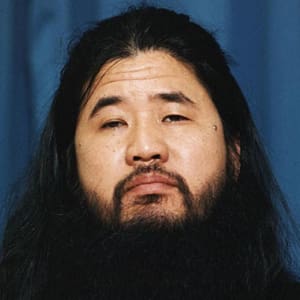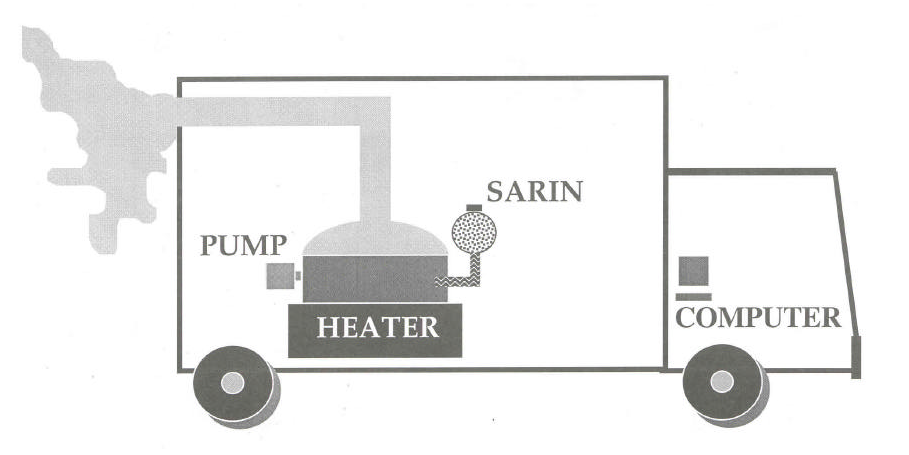
1955 - 2018
Shoko Asahara
Summary
Name:
Shoko AsaharaYears Active:
1994 - 1995Birth:
March 02, 1955Status:
DeceasedClass:
Serial KillerVictims:
3+Method:
Stabbing / Strangulation / Bludgeoning / BeatingDeath:
July 06, 2018Nationality:
Japan
1955 - 2018
Shoko Asahara
Summary: Serial Killer
Name:
Shoko AsaharaStatus:
DeceasedVictims:
3+Method:
Stabbing / Strangulation / Bludgeoning / BeatingNationality:
JapanBirth:
March 02, 1955Death:
July 06, 2018Years Active:
1994 - 1995bio
Chizuo Matsumoto was born on March 2, 1955, in Kumamoto Prefecture, Japan. He was the fourth son in a large, poor family of tatami-mat makers. From birth, Matsumoto faced challenges due to infantile glaucoma. This condition caused him to lose all sight in his left eye and made him partially blind in his right. At the age of six, he was sent to a school for the blind because he could not help in the family business. After that, he did not live with his family again.
While at school, Matsumoto found a way to make money. He directed other kids to a nearby candy store. Being the only student with some vision made him somewhat popular among his peers. However, he was also known for being a bully. He would take advantage of other students, often beating them and extorting money.
As a teenager, Matsumoto had big dreams. He imagined ruling a kingdom of robots and spoke to his classmates about his ambition to become the Prime Minister of Japan. After graduating from high school in 1973, he tried to study politics at Tokyo University but was not accepted. He shifted his focus to acupuncture and traditional Chinese medicine, which were typical careers for blind individuals in Japan. He later opened a Chinese medicine shop just outside Tokyo.
In 1974, Matsumoto got married and had six children, the first of whom was born in 1978. In 1981, he faced legal trouble when he was convicted of practicing pharmacy without a license, which led to a fine. Around this time, his interest in religion began to grow. With a large family to support, he spent his free time exploring various religious beliefs, starting with Chinese astrology and Taoism.
Over the years, he delved into Western esotericism, yoga, meditation, and various spiritual practices. Matsumoto decided to grow out his hair and beard and adopted the name Shoko Asahara. The name "Shoko" means "an offering of incense" in Japanese, while "Asahara" was a more aristocratic surname, unlike his original family name, Matsumoto.
In 1984, Asahara began traveling to India, where he eventually met Tenzin Gyatso, the 14th Dalai Lama. He later claimed to have achieved Enlightenment and felt he was given a special mission to spread "real Buddhism" in Japan. Though the Dalai Lama called Asahara a "strange Japanese man," he denied any significant relationship with him.
Asahara returned to Japan in 1987. He called himself "sonshi," meaning “guru,” and claimed he had mastered meditation to the level of levitating. He promoted these ideas through pamphlets produced by his own publishing company. While he experienced some success in religious circles, it did not gain substantial media attention at the time.
murder story
In October 1989, Aum Shinrikyo members targeted Tsutsumi Sakamoto, a lawyer against the cult. They intended to abduct him after a secret interview was leaked. When Sakamoto did not show up at a train station, the group broke into his home. They attacked and killed Sakamoto, his wife Satoko, and their baby son Tatsuhiko. Their bodies were hidden in metal drums across different prefectures to avoid detection.
On June 27, 1994, Aum Shinrikyo released sarin gas in Matsumoto to attack judges involved in a lawsuit against them. The gas spread from a truck, affecting local residents. Many developed serious health issues, leading to several fatalities.
In early 1995, Aum made multiple attempts to eliminate individuals who opposed them. They committed several assassinations, including that of Kiyoshi Kariya, who was kidnapped and killed. This activity ramped up as police prepared to raid Aum facilities.

On March 20, 1995, Aum members executed a coordinated sarin gas attack in the Tokyo subway. This attack resulted in 13 deaths, with thousands suffering from its effects. Following the attack, police conducted extensive raids, uncovering the scale of Aum's operations and their stockpiles of chemical weapons.
As the investigation continued, more Aum members were arrested, and the group’s criminal activities were exposed. Throughout this period, tensions among cult members and outsiders escalated, leading to further violence.
Shoko Asahara was later apprehended and faced multiple charges related to these incidents. In February 2004, he was sentenced to death for his role in orchestrating the attacks and murders tied to Aum Shinrikyo’s operations. After a long legal process, Asahara was executed by hanging on July 6, 2018.